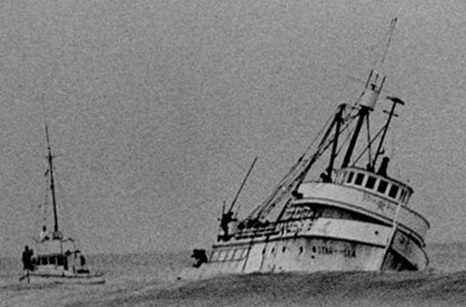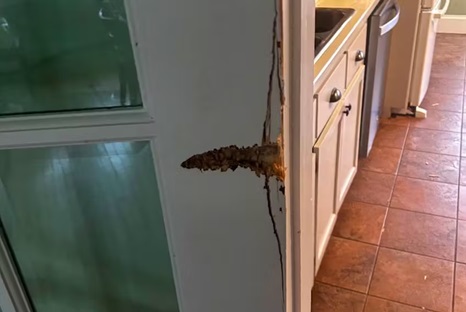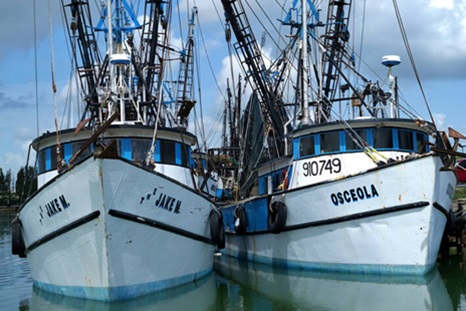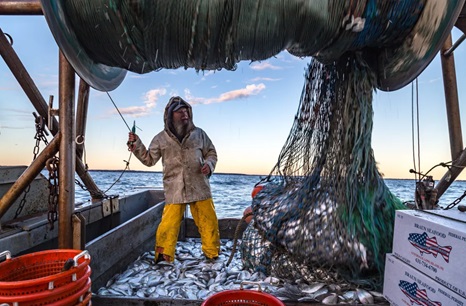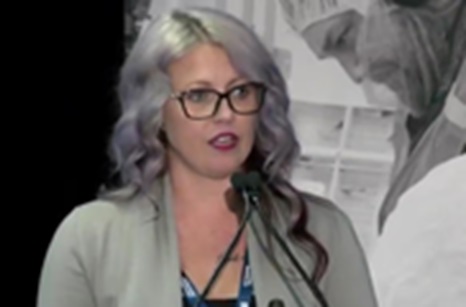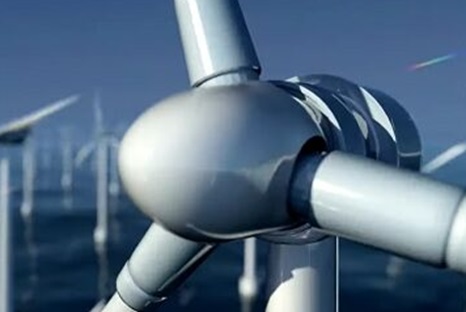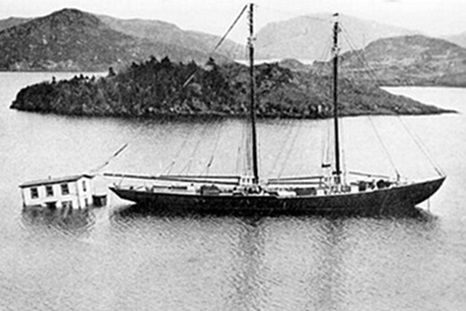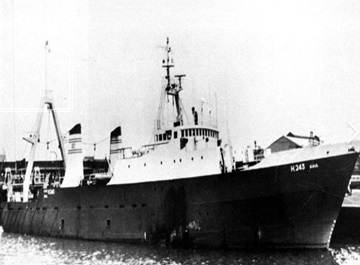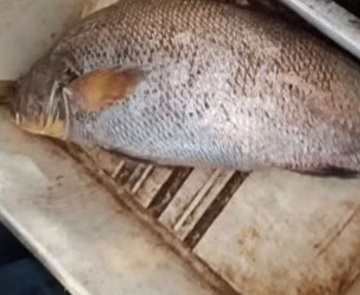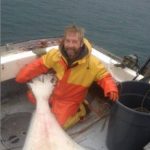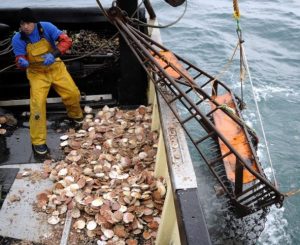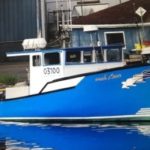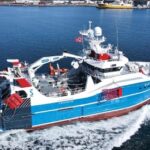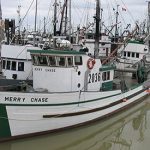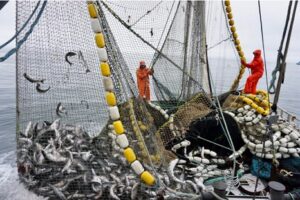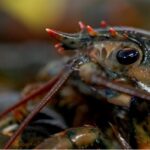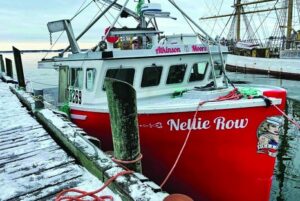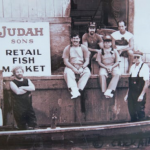EU review gives Wicklow skipper CJ Gaffney hope as home support wanes
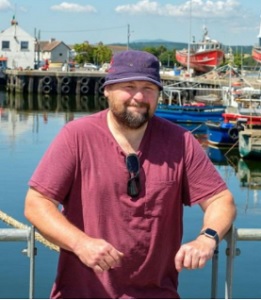 After being shown a glimmer of hope in his ongoing quest for justice via an EU safety review, Arklow skipper CJ Gaffney has slammed the support he has received from Irish representatives, saying: “When the EU is helping you but your own reps aren’t, something is seriously wrong”.In 2007, CJ purchased the Dutch trawler ‘Mary Kate’ and subsequently found she had serious stability issues, which made the boat uninsurable. After trying to take legal action in Holland and Germany (as she was German registered) without success, he took out a loan to cover the considerable cost of fixing the boat. Despite finishing the repairs in 2012, CJ had been unable to earn a living fishing the boat for so long that he was now forced to sell. A UK buyer was found, but due to the boat’s history, she could not be registered with the UK fishing fleet. >>click to read<< 09:47
After being shown a glimmer of hope in his ongoing quest for justice via an EU safety review, Arklow skipper CJ Gaffney has slammed the support he has received from Irish representatives, saying: “When the EU is helping you but your own reps aren’t, something is seriously wrong”.In 2007, CJ purchased the Dutch trawler ‘Mary Kate’ and subsequently found she had serious stability issues, which made the boat uninsurable. After trying to take legal action in Holland and Germany (as she was German registered) without success, he took out a loan to cover the considerable cost of fixing the boat. Despite finishing the repairs in 2012, CJ had been unable to earn a living fishing the boat for so long that he was now forced to sell. A UK buyer was found, but due to the boat’s history, she could not be registered with the UK fishing fleet. >>click to read<< 09:47
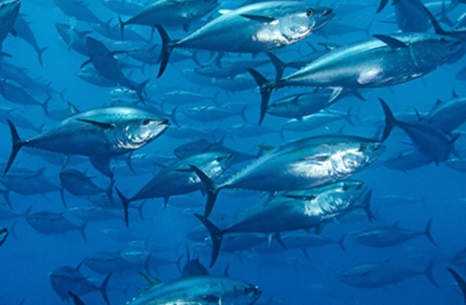
Bluefin Tuna Get It On off North Carolina
In November 1981, a fleet of briefcase-toting lobbyists, scientists, and political negotiators gathered in sunny Tenerife, Spain, to decide the fate of Atlantic bluefin tuna. Representing more than a dozen countries, including Canada, the United States, Spain, and Italy, the besuited men knew crisis loomed. Since the early 1970s, rising global demand for bluefin flesh had spurred fishing fleets—hailing from ports on both sides of the Atlantic Ocean—to kill untold thousands of the wide-ranging predator every year. Under this heavy fishing pressure, primarily driven by the Japanese appetite for sushi-grade tuna, the species careened toward collapse. During the meeting in Tenerife, the American delegation to the International Commission for the Conservation of Atlantic Tunas proposed a disarmingly simple solution: they would draw a line down the middle of the Atlantic Ocean and split the bluefin into two separate stocks. >>click to read<< 08:19
Limits on ratio of fisherman decried
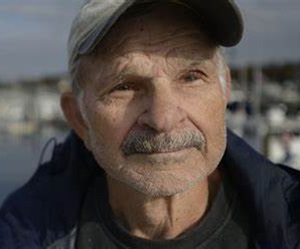 Gloucester Capt. Salvatore “Sam” Novello who has fished the waters off Gloucester for most of his life, is saying while he can fish, some foreign-born fishermen cannot. A member of the Gloucester Fisheries Commission, Novello said this week the U.S. Coast Guard has recently begun to strictly enforce a rule that limits the number of immigrants who are allowed to fish. The measure, the 75-25 rule, requires that 75% of those crews fishing must be American while only 25% can be foreign. In other words, for every four fishermen, three must be native born and only one can hail from another country. Novello blasted the rule as burdensome, saying it only contributes to a slew of other regulations and fishing limits already imposed by NOAA Fisheries that hamper the fishing industry. “Today, all fishing operations can’t find enough help to go fishing,” he said. “ >>click to read<< 07:21
Gloucester Capt. Salvatore “Sam” Novello who has fished the waters off Gloucester for most of his life, is saying while he can fish, some foreign-born fishermen cannot. A member of the Gloucester Fisheries Commission, Novello said this week the U.S. Coast Guard has recently begun to strictly enforce a rule that limits the number of immigrants who are allowed to fish. The measure, the 75-25 rule, requires that 75% of those crews fishing must be American while only 25% can be foreign. In other words, for every four fishermen, three must be native born and only one can hail from another country. Novello blasted the rule as burdensome, saying it only contributes to a slew of other regulations and fishing limits already imposed by NOAA Fisheries that hamper the fishing industry. “Today, all fishing operations can’t find enough help to go fishing,” he said. “ >>click to read<< 07:21
Coast Guard helicopter crash in Southeast Alaska injures 4 crew members
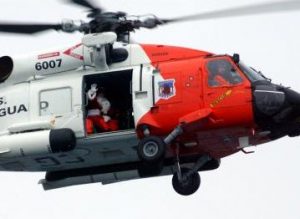 A U.S. Coast Guard helicopter crashed late Monday on an island in Southeast Alaska, and all four people aboard survived, officials said. The Sitka-based MH-60T Jayhawk helicopter crashed on Read Island during a search and rescue mission, U.S. Coast Guard Alaska wrote in a statement Tuesday. The crew members were being treated for serious injuries, the statement said. A crashed on Read Islandfishing vessel reported the crash around 11:05 p.m., according to the statement. The boat had been flooding and was receiving help from the Coast Guard. Two Coast Guard cutters responded to the area to help the flooding fishing vessel and established a security zone around the helicopter crash, the statement said. This is a developing story. >>click to read<< 15:59
A U.S. Coast Guard helicopter crashed late Monday on an island in Southeast Alaska, and all four people aboard survived, officials said. The Sitka-based MH-60T Jayhawk helicopter crashed on Read Island during a search and rescue mission, U.S. Coast Guard Alaska wrote in a statement Tuesday. The crew members were being treated for serious injuries, the statement said. A crashed on Read Islandfishing vessel reported the crash around 11:05 p.m., according to the statement. The boat had been flooding and was receiving help from the Coast Guard. Two Coast Guard cutters responded to the area to help the flooding fishing vessel and established a security zone around the helicopter crash, the statement said. This is a developing story. >>click to read<< 15:59
Three Indigenous-owned businesses given leg up into NSW fishing industry in attempt to close the gap
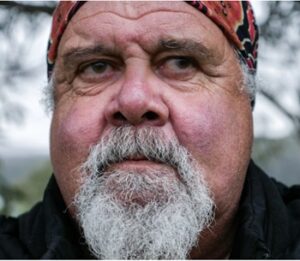 Yuin man Wally Stewart says he has been fighting for 40 years to get his people a seat at the table of the commercial fishing industry on the New South Wales south coast. Today he is a step closer. Mr Stewart is a director of Joonga Land and Water Aboriginal Corporation, one of three Aboriginal community-owned businesses selected by the NSW government to receive support to break into the commercial fishing sector. Mr Stewart is part of a group seeking native title rights over more than 450 kilometres of coastline along the south coast. He hopes to let the Yuin people carry out their cultural fishing practices. “South coast people are coastal people,” he said. “For thousands of years, we’ve relied on our ocean and estuaries for food; our mob were taught to fish and to live and look after our oceans. >>click to read<< 14:45
Yuin man Wally Stewart says he has been fighting for 40 years to get his people a seat at the table of the commercial fishing industry on the New South Wales south coast. Today he is a step closer. Mr Stewart is a director of Joonga Land and Water Aboriginal Corporation, one of three Aboriginal community-owned businesses selected by the NSW government to receive support to break into the commercial fishing sector. Mr Stewart is part of a group seeking native title rights over more than 450 kilometres of coastline along the south coast. He hopes to let the Yuin people carry out their cultural fishing practices. “South coast people are coastal people,” he said. “For thousands of years, we’ve relied on our ocean and estuaries for food; our mob were taught to fish and to live and look after our oceans. >>click to read<< 14:45
Opening of season proves bay scallops are hard to find
 While the rest of us admire fall foliage, North Fork baymen look to nature for signs that predict the health of adult bay scallops. They watch the docks and parking lots to see if they are littered with broken scallop shells dropped and picked over by gulls; a good sign. They scan the beaches after a strong wind to see if scallops have washed up, another good sign. This year, once again, the signs were not encouraging. The bay scallop season, which started Monday in New York and runs through March, looks to be just as bad this year as it has been for the past four, which means the most reliable way to get a bay scallop dinner is to know a fisherman — and the most reliable way for a fisherman to make a living is to fish for something else. >>click to read<< 13:03
While the rest of us admire fall foliage, North Fork baymen look to nature for signs that predict the health of adult bay scallops. They watch the docks and parking lots to see if they are littered with broken scallop shells dropped and picked over by gulls; a good sign. They scan the beaches after a strong wind to see if scallops have washed up, another good sign. This year, once again, the signs were not encouraging. The bay scallop season, which started Monday in New York and runs through March, looks to be just as bad this year as it has been for the past four, which means the most reliable way to get a bay scallop dinner is to know a fisherman — and the most reliable way for a fisherman to make a living is to fish for something else. >>click to read<< 13:03
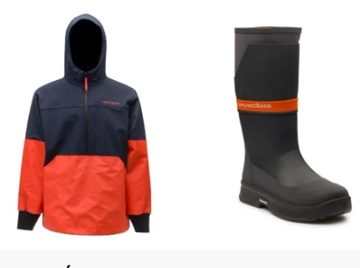
Grundéns Unveils Innovative New Offerings for Commercial Fisherman
Grundéns is proud to introduce its latest range of innovative new products designed with the extreme demands of commercial fishermen squarely in mind. With nearly 100 years of hard earned know how protecting commercial fisherman from the harshest conditions imaginable, Grundéns relentless pursuit to create the worlds most trusted gear can be seen throughout these new products. Leading their new offerings is the Crewman Tall boot, engineered in partnership with Michelin® who helped develop the outsole of the new Crewman Tall boot. >>click to read<< 11:25
Lawmakers form Seafood Caucus to help Louisiana fishermen
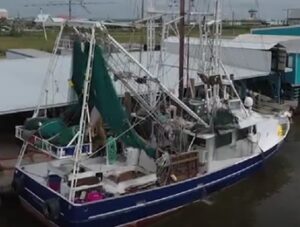 Consumers likely don’t think twice about where the shrimp or seafood bought at grocery store comes from, but Louisiana fisherman—and now federal lawmakers—are asking people to pay attention. “We’re losing an industry and a culture and a way of life in Louisiana and across the country,” said Acy Cooper, who comes from a long line of shrimpers. He says what was once a reliable profession has now become heartache. It’s not just a problem in Louisiana—which is why lawmakers from all four of the country’s coasts are joining together to find a solution. Video, >>click to read<< 10:28
Consumers likely don’t think twice about where the shrimp or seafood bought at grocery store comes from, but Louisiana fisherman—and now federal lawmakers—are asking people to pay attention. “We’re losing an industry and a culture and a way of life in Louisiana and across the country,” said Acy Cooper, who comes from a long line of shrimpers. He says what was once a reliable profession has now become heartache. It’s not just a problem in Louisiana—which is why lawmakers from all four of the country’s coasts are joining together to find a solution. Video, >>click to read<< 10:28
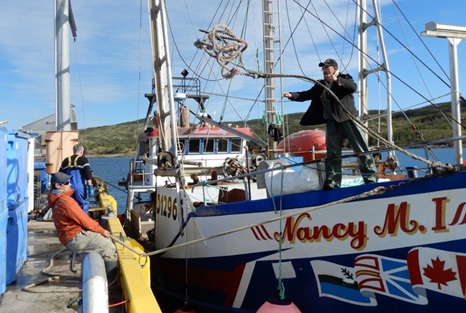
Northern cod numbers may have moved out of critical zone, says federal scientist
Captain Alex Saunders has more experience fishing northern cod than most fishermen. At 81 years old, the fishing captain has fished for cod off the Labrador coast for six decades. This year, he says, was a banner year for that fishery. “There were no codfish in northern Labrador for about 60 years, but this summer the cod were all along the Labrador coast from Blanc Sablan in the south to north of Nain,” Mr. Saunders says. A good catch rate this season meant Mr. Saunders’s crew hauled in 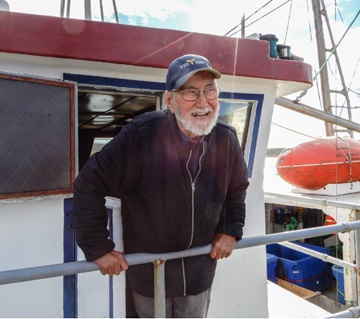 gillnets every day for weeks, returning to communities such as Pinsent’s Arm, a fishing town of about 50 people along the Labrador coast, to land cod at the wharf. But the season’s quick success also meant its early closing. “On a Friday afternoon they said, ‘Get your gear out of the water Sunday by six o’clock,’” Mr. Saunders says of the Department of Fisheries and Oceans’ (DFO) decision to shut down the fall northern cod stewardship fishery weeks earlier than planned – a measure to ensure fishing did not exceed season limits. Photos, >>click to read<< 08:33
gillnets every day for weeks, returning to communities such as Pinsent’s Arm, a fishing town of about 50 people along the Labrador coast, to land cod at the wharf. But the season’s quick success also meant its early closing. “On a Friday afternoon they said, ‘Get your gear out of the water Sunday by six o’clock,’” Mr. Saunders says of the Department of Fisheries and Oceans’ (DFO) decision to shut down the fall northern cod stewardship fishery weeks earlier than planned – a measure to ensure fishing did not exceed season limits. Photos, >>click to read<< 08:33
Canada, Nova Scotia move to improve fishing vessel safety
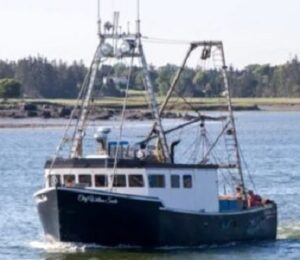 On the eve of the most lucrative fishery in Canada, federal and provincial authorities are ramping up fishing vessel inspections in Nova Scotia seeking proof of safety procedures and annual inspections of hoists and other lifting devices. Lobster season in southwest Nova Scotia opens in two weeks. Some of the increased scrutiny is being attributed to the sinking of the Chief William Saulis, a scallop dragger that went down in heavy seas near Digby in December 2020. All six men on board died. Transport Canada has served notice that its marine inspectors want to see written safety procedures on board and proof crew members are familiar with them. “Failure will result in a deficiency notice or detention of the vessel,” says spokesperson Sau Sau Liu. Video,>>click to read<< 07:08
On the eve of the most lucrative fishery in Canada, federal and provincial authorities are ramping up fishing vessel inspections in Nova Scotia seeking proof of safety procedures and annual inspections of hoists and other lifting devices. Lobster season in southwest Nova Scotia opens in two weeks. Some of the increased scrutiny is being attributed to the sinking of the Chief William Saulis, a scallop dragger that went down in heavy seas near Digby in December 2020. All six men on board died. Transport Canada has served notice that its marine inspectors want to see written safety procedures on board and proof crew members are familiar with them. “Failure will result in a deficiency notice or detention of the vessel,” says spokesperson Sau Sau Liu. Video,>>click to read<< 07:08
SME universe | The multi-fishing boat that will make a difference
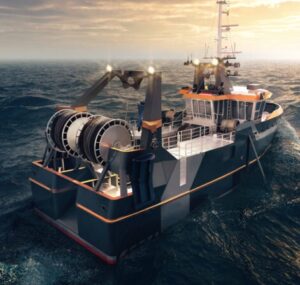 Engineers Hubert Simard and Jean-Nil Poirier Morissette, from the naval architecture firm Navanex, spent ten days in the North Atlantic in January 2023 as crew on a fishing vessel of their design, in order to fully immerse themselves in life on board. “We had a good understanding of how fishermen fish,” says Hubert Simard, project manager at Navanex, “but we decided to do a field experiment to really understand and feel it. They felt. Ten days of labor and Gravol. Winds of 55 knots. Swells up to 7 meters. And they learned. A lot. “It took us a couple of days to get over it, but after that we knew what we were talking about. >>click to read<< 16:40
Engineers Hubert Simard and Jean-Nil Poirier Morissette, from the naval architecture firm Navanex, spent ten days in the North Atlantic in January 2023 as crew on a fishing vessel of their design, in order to fully immerse themselves in life on board. “We had a good understanding of how fishermen fish,” says Hubert Simard, project manager at Navanex, “but we decided to do a field experiment to really understand and feel it. They felt. Ten days of labor and Gravol. Winds of 55 knots. Swells up to 7 meters. And they learned. A lot. “It took us a couple of days to get over it, but after that we knew what we were talking about. >>click to read<< 16:40
Commercial Fisherman William ‘Buzz/Buzzer’ Alexander Ropes III, of Round Pound, has passed away
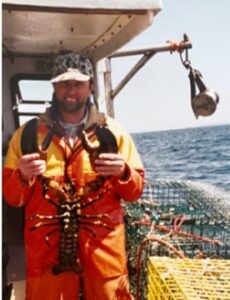 On the evening of Oct. 26, 2023, Buzz Ropes passed away peacefully. Buzz was born Feb. 27, 1948 in Montclair, N.J., to Bertah Whitney “Bud” and William A. Ropes II “Bill.” Shortly after, Bill introduced his wife and son to his beloved state of Maine, driving from New Jersey in a model T Ford. Buzz spent his childhood in Round Pond with his sisters, Susan and Claudia. After graduating, Buzz spent the majority of his time on the water. His mentor, Cheever Prentice, instilled a passion for fishing and lobstering. He learned much from “Cheevah” while working as his sternman aboard F/V Harmony. It was this experience that shaped his future on the water. Buzz had a very successful career as a commercial fisherman spanning over 37 years and three boats: F/V Karen R., F/V Great Spirit, and F/V Harmony..>>click to read<< 14:34
On the evening of Oct. 26, 2023, Buzz Ropes passed away peacefully. Buzz was born Feb. 27, 1948 in Montclair, N.J., to Bertah Whitney “Bud” and William A. Ropes II “Bill.” Shortly after, Bill introduced his wife and son to his beloved state of Maine, driving from New Jersey in a model T Ford. Buzz spent his childhood in Round Pond with his sisters, Susan and Claudia. After graduating, Buzz spent the majority of his time on the water. His mentor, Cheever Prentice, instilled a passion for fishing and lobstering. He learned much from “Cheevah” while working as his sternman aboard F/V Harmony. It was this experience that shaped his future on the water. Buzz had a very successful career as a commercial fisherman spanning over 37 years and three boats: F/V Karen R., F/V Great Spirit, and F/V Harmony..>>click to read<< 14:34
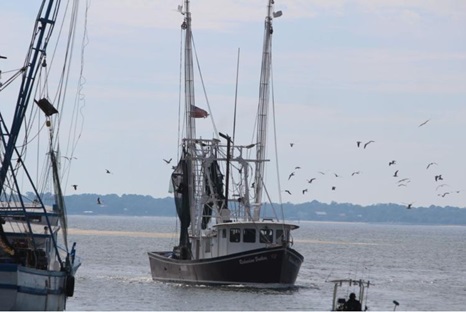
The Fleet fights back: Fishermen unite to curb shrimp dumping
Mount Pleasant’s Economic Development Committee met on Nov. 6 and voted in favor of the proposed economic disaster declaration from the South Carolina Shrimper’s Association and Southern Shrimp Alliance that asserts the Mount Pleasant shrimping fleet can’t sustain itself due to the harmful impacts of shrimp dumping, or the flooding of the market with imported, non-domestic shrimp. Mount Pleasant is the second municipality in South Carolina to declare a state of economic disaster for the domestic shrimping industry. Bryan Jones, vice president of the South Carolina Shrimper’s Association, said the declaration is more than symbolic — it’s one crucial part of a fight that is bringing fishermen from across the Southern United States together to defend their businesses, livelihoods and the shrimping industry as a whole. >>click to read<< 12:40
Tragedy at Sea: Celebrated Fisherman Travis Myer Loses his Livelihood
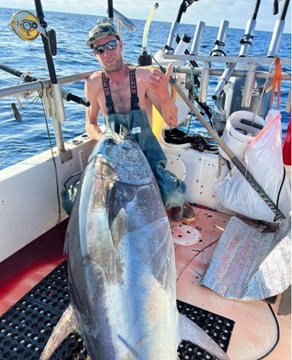 Ask any restaurateur along the coast from here to San Francisco who Travis Meyer is, and they’ll likely tell you he’s the halibut whisperer. He supplies restaurants from Isla and Crudo e Nudo in Santa Monica to Laquita in Santa Barbara, Industrial Eats in Buellton, Mattei’s Tavern in Los Olivos, Full of Life Flatbread in Los Alamos and several in Paso Robles. His halibut, sea bass, and bluefin tuna are the stuff of legend in an increasingly competitive world of commercial fishing. “Travis has connected us directly to the pristine marine life that surrounds the Channel Islands,” Jason Paluska, when we first met, he delivered a beautiful California halibut that was dispatched using the ike jime method. It was hands down the freshest and cleanest bite of raw fish that I had ever tasted.” That all changed about a week ago on a midnight run to Hollister Ranch, when Meyer lost his boat, his livelihood and nearly his life. Here, the seasoned fisherman tells the tale in his own words: >>click to read<< 11:31
Ask any restaurateur along the coast from here to San Francisco who Travis Meyer is, and they’ll likely tell you he’s the halibut whisperer. He supplies restaurants from Isla and Crudo e Nudo in Santa Monica to Laquita in Santa Barbara, Industrial Eats in Buellton, Mattei’s Tavern in Los Olivos, Full of Life Flatbread in Los Alamos and several in Paso Robles. His halibut, sea bass, and bluefin tuna are the stuff of legend in an increasingly competitive world of commercial fishing. “Travis has connected us directly to the pristine marine life that surrounds the Channel Islands,” Jason Paluska, when we first met, he delivered a beautiful California halibut that was dispatched using the ike jime method. It was hands down the freshest and cleanest bite of raw fish that I had ever tasted.” That all changed about a week ago on a midnight run to Hollister Ranch, when Meyer lost his boat, his livelihood and nearly his life. Here, the seasoned fisherman tells the tale in his own words: >>click to read<< 11:31
Fishermen threaten to ‘stop fishing’, take legal action over massive block of offshore wind farms
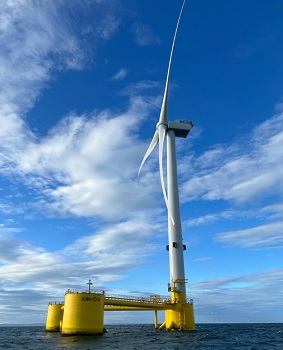 Fishing boat owners in the north are threatening to stop fishing, and file injunctions with Europe, over the proposed creation of a massive block of offshore wind farms, which they have claimed will turn rich fishing areas into comparative deserts. The situation is that six new windfarms are planned for the areas off Sines, Ericeira, Figueira da Foz, Leixões and Viana do Castelo, where a small offshore wind farm has been operating since 2020, with three turbines that have already produced clean energy to serve the equivalent of 60,000 people but have also shown fishermen how fish have effectively ‘vanished’ from the waters. Earlier this year, 15 associations went public with the warning that if two wind farms are sanctioned off Viana do Castelo (as is the plan), authorities may as well issue “a death certificate for fishing”, as all the fish – on which hundreds of boats/ families and local businesses depend will disappear. >>click to read<< 10:08
Fishing boat owners in the north are threatening to stop fishing, and file injunctions with Europe, over the proposed creation of a massive block of offshore wind farms, which they have claimed will turn rich fishing areas into comparative deserts. The situation is that six new windfarms are planned for the areas off Sines, Ericeira, Figueira da Foz, Leixões and Viana do Castelo, where a small offshore wind farm has been operating since 2020, with three turbines that have already produced clean energy to serve the equivalent of 60,000 people but have also shown fishermen how fish have effectively ‘vanished’ from the waters. Earlier this year, 15 associations went public with the warning that if two wind farms are sanctioned off Viana do Castelo (as is the plan), authorities may as well issue “a death certificate for fishing”, as all the fish – on which hundreds of boats/ families and local businesses depend will disappear. >>click to read<< 10:08
Survival and grief: The story of the Ross Cleveland tragedy
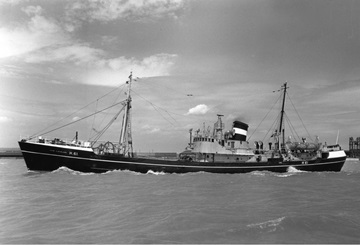 Fifty-five years ago last month the public inquiry into the loss of the Hull trawler Ross Cleveland and the deaths of 18 men began at Hull City Hall. It was the last time Harry Eddom ever spoke publicly about how he survived the disaster that claimed the lives of the rest of the ship’s crew eight months earlier. During the three-week inquiry, his dramatic witness testimony was only rivalled by evidence given by Len Whur, skipper of another Hull trawler Kingston Andalusite, the nearest vessel to the Ross Cleveland at the time of the tragedy. Whur was desperately trying to save his own ship after being caught in the worst storm experienced off the north-west Icelandic coast in living memory when he received a radio message from his cousin Phil Gay, skipper of the Ross Cleveland. Photos, >>click to read<< 08:26
Fifty-five years ago last month the public inquiry into the loss of the Hull trawler Ross Cleveland and the deaths of 18 men began at Hull City Hall. It was the last time Harry Eddom ever spoke publicly about how he survived the disaster that claimed the lives of the rest of the ship’s crew eight months earlier. During the three-week inquiry, his dramatic witness testimony was only rivalled by evidence given by Len Whur, skipper of another Hull trawler Kingston Andalusite, the nearest vessel to the Ross Cleveland at the time of the tragedy. Whur was desperately trying to save his own ship after being caught in the worst storm experienced off the north-west Icelandic coast in living memory when he received a radio message from his cousin Phil Gay, skipper of the Ross Cleveland. Photos, >>click to read<< 08:26
Atlantic Enterprise: Large Shrimp and Halibut Factory Trawler for Ocean Prawns Canada Operations
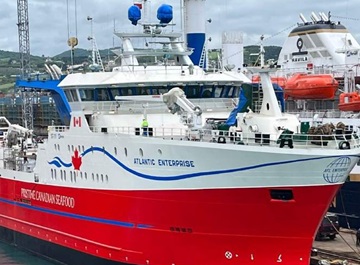 Clearwater Ocean Prawns Venture (COPV), a joint venture formed by Danish fishing company Ocean Prawns and Canada’s Clearwater Seafoods, has expanded its fleet with the recent acquisition of a new deep-sea-capable factory trawler designed by Norwegian naval architecture firm Skipsteknisk. The DNV-classed, Polar Coded trawler Atlantic Enterprise measures 83.2 by 18 metres and is equipped primarily for catching and processing shrimp and Greenland halibut in Arctic waters. The freezer hold has a total capacity of 3,000 cubic metres across two decks and includes space for pallets. Ocean Prawns said the vessel will be capable of landing around 1,200 tonnes of pre-packaged, sea-frozen coldwater prawns each trip and around 2,500 tonnes of halibut per year. Photos, >>click to read<< o7:06
Clearwater Ocean Prawns Venture (COPV), a joint venture formed by Danish fishing company Ocean Prawns and Canada’s Clearwater Seafoods, has expanded its fleet with the recent acquisition of a new deep-sea-capable factory trawler designed by Norwegian naval architecture firm Skipsteknisk. The DNV-classed, Polar Coded trawler Atlantic Enterprise measures 83.2 by 18 metres and is equipped primarily for catching and processing shrimp and Greenland halibut in Arctic waters. The freezer hold has a total capacity of 3,000 cubic metres across two decks and includes space for pallets. Ocean Prawns said the vessel will be capable of landing around 1,200 tonnes of pre-packaged, sea-frozen coldwater prawns each trip and around 2,500 tonnes of halibut per year. Photos, >>click to read<< o7:06
How the US coast guard made an unsinkable boat
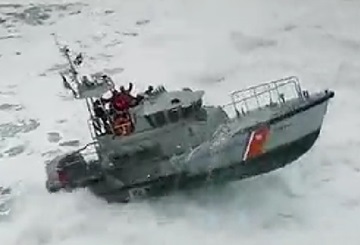 Introducing the remarkable 47-foot Motor Lifeboat (47 MLB), an unsinkable marvel exclusively operated by the United States Coast Guard. This vessel’s self-righting ability is a testament to naval engineering, with a low center of gravity, high buoyancy, and watertight integrity that defy the odds of capsizing. The dedicated surfmen, after six years of rigorous training, navigate treacherous waves with precision, employing techniques to outrun, dodge, and absorb wave energy, ensuring safety during rescue missions. Despite the challenges of time, efforts are underway to extend the operational lifespan of these unsinkable heroes, a symbol of resilience and unwavering dedication to maritime safety. Video, >>click to read<< 16:47
Introducing the remarkable 47-foot Motor Lifeboat (47 MLB), an unsinkable marvel exclusively operated by the United States Coast Guard. This vessel’s self-righting ability is a testament to naval engineering, with a low center of gravity, high buoyancy, and watertight integrity that defy the odds of capsizing. The dedicated surfmen, after six years of rigorous training, navigate treacherous waves with precision, employing techniques to outrun, dodge, and absorb wave energy, ensuring safety during rescue missions. Despite the challenges of time, efforts are underway to extend the operational lifespan of these unsinkable heroes, a symbol of resilience and unwavering dedication to maritime safety. Video, >>click to read<< 16:47

Murphy Tagged $1 Billion of Ratepayer Subsidies to Bailout Failed Foreign Wind Energy Corporation
Senator Michael Testa recently addressed the withdrawal of Ørsted, a Danish wind energy company, from the Ocean Wind 1 & 2 offshore wind farm projects in New Jersey. Testa’s comments highlighted the complexities and controversies surrounding the state’s investment in green energy. Testa criticized the allocation of state funds, including a $1 billion investment in Ørsted’s projects, as a burden on taxpayers and ratepayers. He described the investment as “a drop in the ocean,” underscoring his view that the funds were insufficient to achieve the intended goals. Additionally, Testa expressed concern about the establishment of a $5 million wind institute, which he perceives as a “propaganda arm” of the wind industry. >>click to read<< 14:50
Save US shrimping industry. Buy domestic wild-caught shrimp.
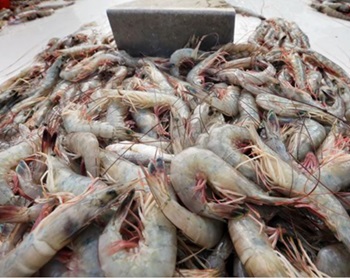 For decades, South Carolina’s shrimpers have faced challenges, but the imported shrimp crisis has reached a critical juncture. The influx of foreign shrimp, often at artificially low prices, is decimating our domestic shrimping industry, putting the livelihoods of thousands of South Carolina families at risk. The situation has changed dramatically in recent years. The rising tide of imported shrimp far outpaces shrimp consumption in the United States because of subsidized foreign production and lax trade enforcement. American shrimpers aren’t competing on a level playing field. We face an inflection point. If we do not take decisive action, the domestic shrimping industry will collapse, with devastating consequences for our coastal communities and the heritage of shrimping in South Carolina. >>click to read<< 09:06
For decades, South Carolina’s shrimpers have faced challenges, but the imported shrimp crisis has reached a critical juncture. The influx of foreign shrimp, often at artificially low prices, is decimating our domestic shrimping industry, putting the livelihoods of thousands of South Carolina families at risk. The situation has changed dramatically in recent years. The rising tide of imported shrimp far outpaces shrimp consumption in the United States because of subsidized foreign production and lax trade enforcement. American shrimpers aren’t competing on a level playing field. We face an inflection point. If we do not take decisive action, the domestic shrimping industry will collapse, with devastating consequences for our coastal communities and the heritage of shrimping in South Carolina. >>click to read<< 09:06
In Texas, Vietnamese American Shrimpers Must Forge a New Path Again
 The sun was still rising when Vinh Nguyen hauled in his first catch of the day. For the next half-hour, he worked methodically, using his bare fingers to sort the slippery crustaceans from Matagorda Bay. The famed Texas brown shrimp went in one bucket. The Texas white shrimp in another. Seagulls and pelicans hovered around him in the cool, sticky air, while dolphins swam alongside the boat. All were eager for the discarded fish — free breakfast. By noon, Mr. Nguyen caught enough shrimp to take home about $600, a decent profit these days, but still less than in years past when $1,000 marked a good day. “Not much,” he frowned, as he stood on the slick deck assessing the ice chests that were now filled with shrimp. Photos, >>click to read<<07:35
The sun was still rising when Vinh Nguyen hauled in his first catch of the day. For the next half-hour, he worked methodically, using his bare fingers to sort the slippery crustaceans from Matagorda Bay. The famed Texas brown shrimp went in one bucket. The Texas white shrimp in another. Seagulls and pelicans hovered around him in the cool, sticky air, while dolphins swam alongside the boat. All were eager for the discarded fish — free breakfast. By noon, Mr. Nguyen caught enough shrimp to take home about $600, a decent profit these days, but still less than in years past when $1,000 marked a good day. “Not much,” he frowned, as he stood on the slick deck assessing the ice chests that were now filled with shrimp. Photos, >>click to read<<07:35
Harbour Grace shipyard owners try to assure creditors, customers as workers brace for the worst
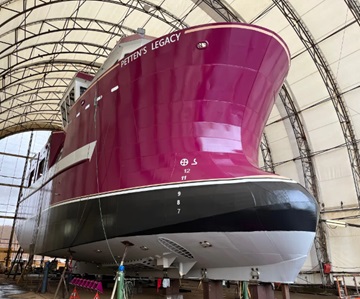 The owners of a busy shipyard in Harbour Grace are trying to assure creditors as they scramble to save a big employer in Conception Bay North. Meanwhile, dozens of workers are bracing as their jobs hang in the balance. “I got a mortgage. I got vehicle payments. I got two small children at home. A wife. There’s a lot at stake,” electrician’s helper Jake St. George said this week during his lunch break at Harbour Grace Ocean Enterprises. The shipyard has fallen on hard financial times, and a list of creditors owed nearly $16 million have been demanding their money. So in a bid to salvage the business and restructure the operation in order to avoid bankruptcy, the company was granted temporary protection from its creditors last week by the Supreme Court of Newfoundland and Labrador. >>click to read<< 16:42
The owners of a busy shipyard in Harbour Grace are trying to assure creditors as they scramble to save a big employer in Conception Bay North. Meanwhile, dozens of workers are bracing as their jobs hang in the balance. “I got a mortgage. I got vehicle payments. I got two small children at home. A wife. There’s a lot at stake,” electrician’s helper Jake St. George said this week during his lunch break at Harbour Grace Ocean Enterprises. The shipyard has fallen on hard financial times, and a list of creditors owed nearly $16 million have been demanding their money. So in a bid to salvage the business and restructure the operation in order to avoid bankruptcy, the company was granted temporary protection from its creditors last week by the Supreme Court of Newfoundland and Labrador. >>click to read<< 16:42
Mr Fisher: Taking viewers on a real time ride on a fishing vessel
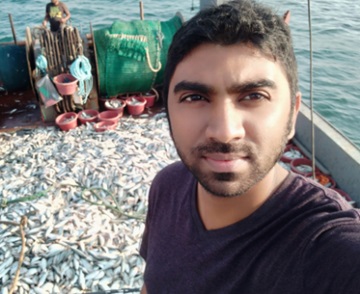 Md Jahidur Rahman, a fishing boat skipper, has been sharing videos of fishing operations in the Bay of Bengal for some time now, and one can watch the everyday life of our sea-going fishers aboard the trawlers, as well as many other tiny details of thsharing videose business. While wooden fishing boats are common along the coastline of the country, industrial fishing vessels fitted with modern equipment are only seen in the Chattogram area. As a result, the videos of the boats operating in the sea have drawn the attention of viewers. Jahid says it is the main goal of his vlogging. “The goal of the videos is to let people know about our marine fishing industry: how we use the latest fishing equipment on modern fishing vessels, which people have only seen on television,” said Jahid. photos, >>click to read<< 12:44
Md Jahidur Rahman, a fishing boat skipper, has been sharing videos of fishing operations in the Bay of Bengal for some time now, and one can watch the everyday life of our sea-going fishers aboard the trawlers, as well as many other tiny details of thsharing videose business. While wooden fishing boats are common along the coastline of the country, industrial fishing vessels fitted with modern equipment are only seen in the Chattogram area. As a result, the videos of the boats operating in the sea have drawn the attention of viewers. Jahid says it is the main goal of his vlogging. “The goal of the videos is to let people know about our marine fishing industry: how we use the latest fishing equipment on modern fishing vessels, which people have only seen on television,” said Jahid. photos, >>click to read<< 12:44
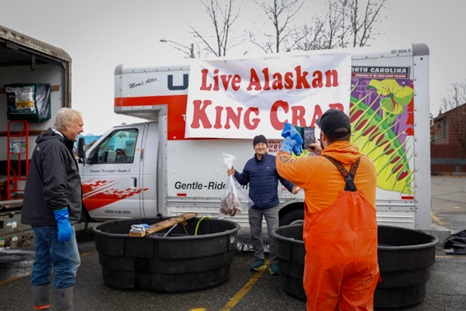
Alaska crabbers get creative with pop-up sales, but industry’s fate uncertain
With Alaska’s Bering Sea snow crab fishery shut down for the second year in a row, crabbers are having to make tough decisions and find creative ways to earn income, like selling direct to Anchorage consumers, sometimes in parking lots. A hand-painted sign on an Anchorage street corner and a hanging sign with the words “Live Alaskan King Crab” were enough to draw in customers to a Spenard parking lot that had become home to one of the shellfish pop-up sales. The live crab sale was in its fourth day on Nov. 2 and had already sold more than three-quarters of the 700 red king crabs hauled out from the Bering Sea. In an attempt to make up some lost income, third-generation fisherman Gabriel Prout brought red king crab to Anchorage to sell directly to consumers. Photos, >>click to read<< 09:16
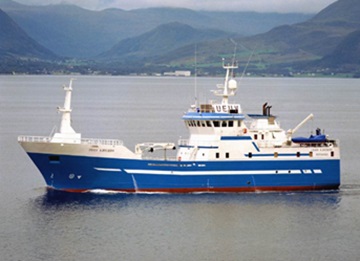
Fishing Vessel Nord-Fugloy: Seiner designed for northern Norwegian waters
Norwegian shipbuilder Larsnes Mek Verksted recently delivered a new seiner to compatriot fishing company Camaro Fiskeriselskap. Named after a local island, Nord-Fugløy was built to a DNV-compliant design developed by local naval architecture firm Skipskompetanse for seine netting and purse seining. Kent-Arild Apneseth, project manager at Skipskompetanse, said the brief from the owner was to optimise a vessel for the coastal fishery and implement a new way of operating Danish seine, hauling the net from the stern in a manner that will increase efficiency and to be able to operate more securely in a larger weather window. Photos, >>click to read<<08:21
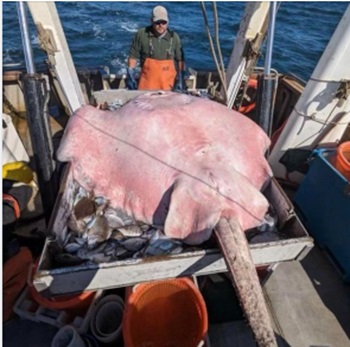
Connecticut fishermen catch a massive 400-pound Stingray
I don’t know about you, but in my world, stingrays aren’t 400 pounds. In the real world so to speak, it’s just as uncommon for your basic ray, too, so this catch in the Long Island Sound off the Connecticut coast is about as rare as you can get. Truly a ‘whoa’ moment. Our Long Island Sound Trawl Survey crew never knows what they might see on a given day out on the Sound – yesterday was a stand-out example. First, the crew trawled up a HUGE roughtail stingray (Bathytosia centroura): over 6 ft. long, 5 ft. wide, and an estimated 400 pounds! These gentle giants are found along the Atlantic coast from New England to Florida but are relatively rare in Long Island Sound. photos, >>click to read<< 07:30
May deaths of two New Brunswick fishermen prompt advisory letter from TSB
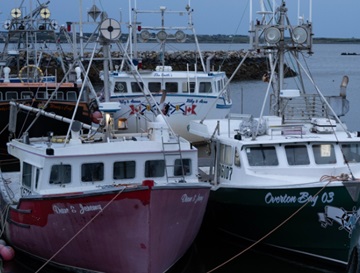 The Transportation Safety Board of Canada has issued a warning to three government bodies about overloading fishing boats, in response to the deaths of two New Brunswick lobster fishermen earlier this year. Fifty-eight-year-old Eugene Beaudin and his 33-year-old great-nephew, Normand Beaudin, fell off their fishing boat and died in the water off Miscou Island, N.B., on May 6. In the Oct. 30 letter to Transport Canada, Fisheries and Oceans Canada and WorkSafeNB, the safety board’s director of marine investigations, Clifford Harvey, wrote that the vessel Tracy Dawn left the harbour loaded with 119 traps and encountered rough weather. Harvey says the fishers fell overboard trying to drop traps into the water. >>click to read<< 18:50
The Transportation Safety Board of Canada has issued a warning to three government bodies about overloading fishing boats, in response to the deaths of two New Brunswick lobster fishermen earlier this year. Fifty-eight-year-old Eugene Beaudin and his 33-year-old great-nephew, Normand Beaudin, fell off their fishing boat and died in the water off Miscou Island, N.B., on May 6. In the Oct. 30 letter to Transport Canada, Fisheries and Oceans Canada and WorkSafeNB, the safety board’s director of marine investigations, Clifford Harvey, wrote that the vessel Tracy Dawn left the harbour loaded with 119 traps and encountered rough weather. Harvey says the fishers fell overboard trying to drop traps into the water. >>click to read<< 18:50
New England lobstermen threaten to sue feds over planned Massachusetts fishing closure
 NOAA is looking to permanently add a wedge between state and federal waters to an existing closure that stretches roughly 9,000 square miles off the Massachusetts coast, a measure feds have put in place to preserve the North Atlantic right whale. An emergency rule prohibited trap and pot fishery buoy lines on the wedge during the past two years, but the feds are looking to make the zone permanent and have the backing of the Massachusetts Division of Marine Fisheries. The proposed permanent expansion to the Massachusetts Restricted Area has caught lobstermen by surprise. Dustin Delano, chief operating officer of the New England Fishermen’s Stewardship Association, took exception to the “recklessness” of the proposal after an amendment was included in this year’s $1.7 trillion federal spending bill that looked to delay protections for the North Atlantic right whale by six years. >>click to read<< 11L27
NOAA is looking to permanently add a wedge between state and federal waters to an existing closure that stretches roughly 9,000 square miles off the Massachusetts coast, a measure feds have put in place to preserve the North Atlantic right whale. An emergency rule prohibited trap and pot fishery buoy lines on the wedge during the past two years, but the feds are looking to make the zone permanent and have the backing of the Massachusetts Division of Marine Fisheries. The proposed permanent expansion to the Massachusetts Restricted Area has caught lobstermen by surprise. Dustin Delano, chief operating officer of the New England Fishermen’s Stewardship Association, took exception to the “recklessness” of the proposal after an amendment was included in this year’s $1.7 trillion federal spending bill that looked to delay protections for the North Atlantic right whale by six years. >>click to read<< 11L27






